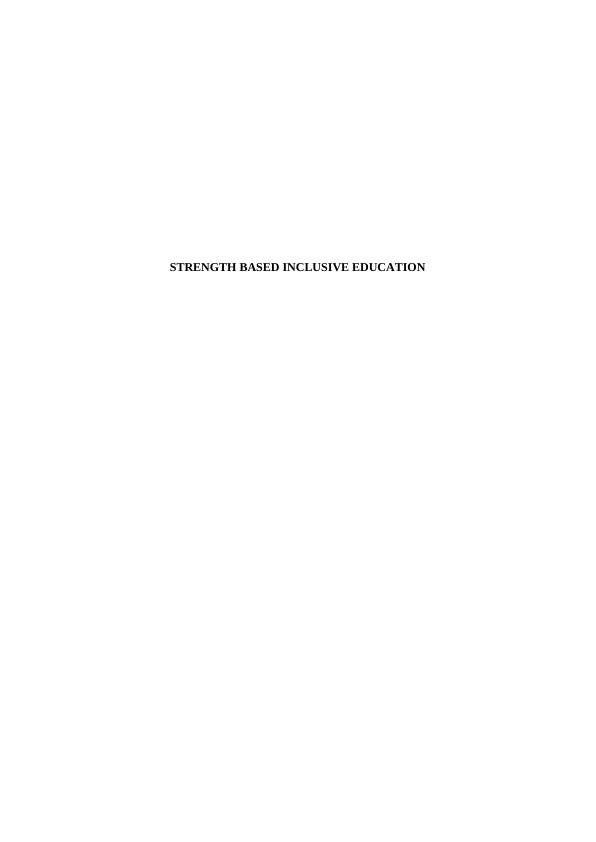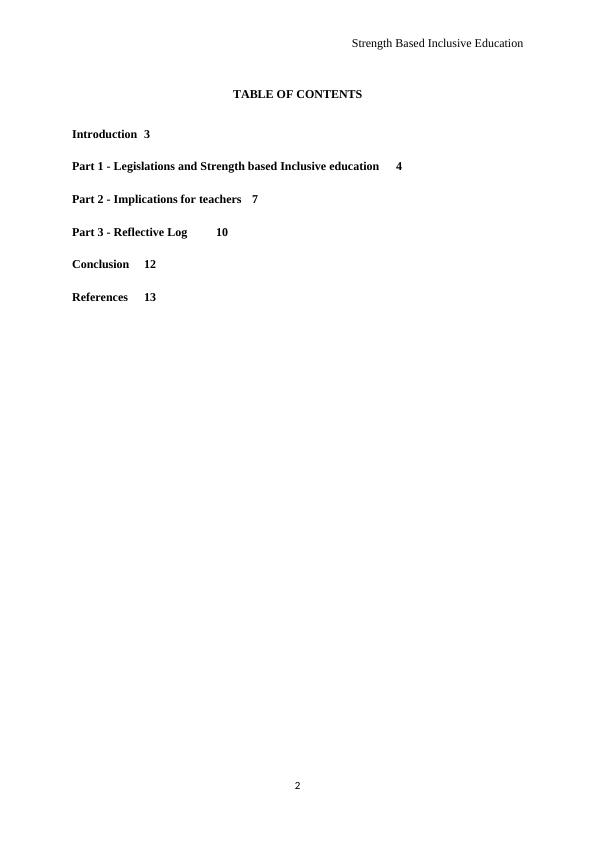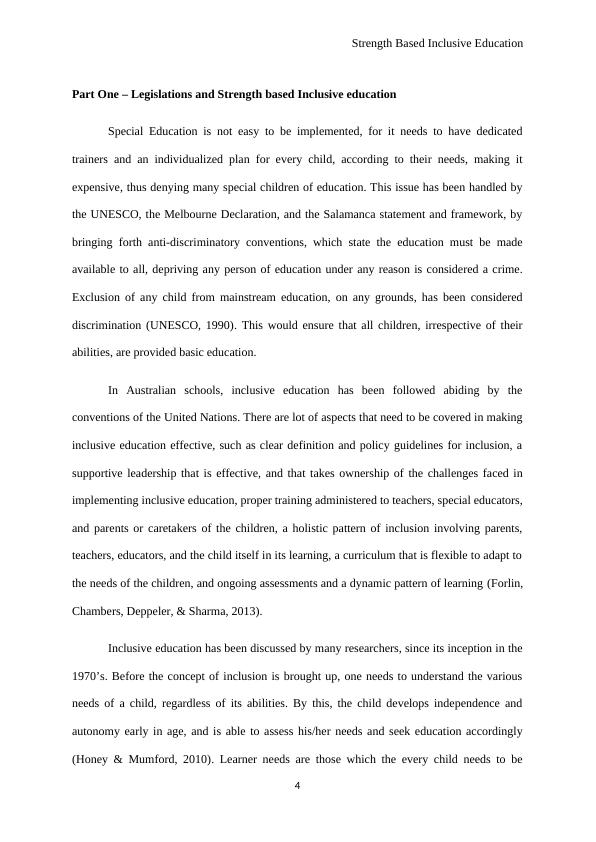Strength Based Inclusive Education
Identification and analysis of individual learner needs in the classroom and application of knowledge of relevant legislative, administrative, and organizational policies and practices to inclusively and ethically cater for the broad range of individual learner needs.
14 Pages3813 Words143 Views
Added on 2023-06-08
About This Document
This essay discusses the legislations, policies, and practices of inclusive education, and the ways in which they are implemented in Australia’s schools. Reviewing relevant literatures, the needs of a child with special needs are listed, and the strength based model of inclusive education is discussed. A reflective log of the broad ranges of inclusive teaching methods and their individual impact of is also made.
Strength Based Inclusive Education
Identification and analysis of individual learner needs in the classroom and application of knowledge of relevant legislative, administrative, and organizational policies and practices to inclusively and ethically cater for the broad range of individual learner needs.
Added on 2023-06-08
ShareRelated Documents
End of preview
Want to access all the pages? Upload your documents or become a member.
Historical, Political, and Curricular Rationales for Inclusive Education
|4
|1745
|78
Inclusive Practices Assignment
|12
|3492
|354
Inclusion in Special Education: Models, Strategies, and Benefits
|15
|3790
|337
Inclusive Education in Early Childhood Settings
|14
|3896
|129
Children's Behaviour Assignment
|9
|514
|132
Importance of Sense of Belonging for Children with Learning Difficulties in Schools
|7
|1458
|71




